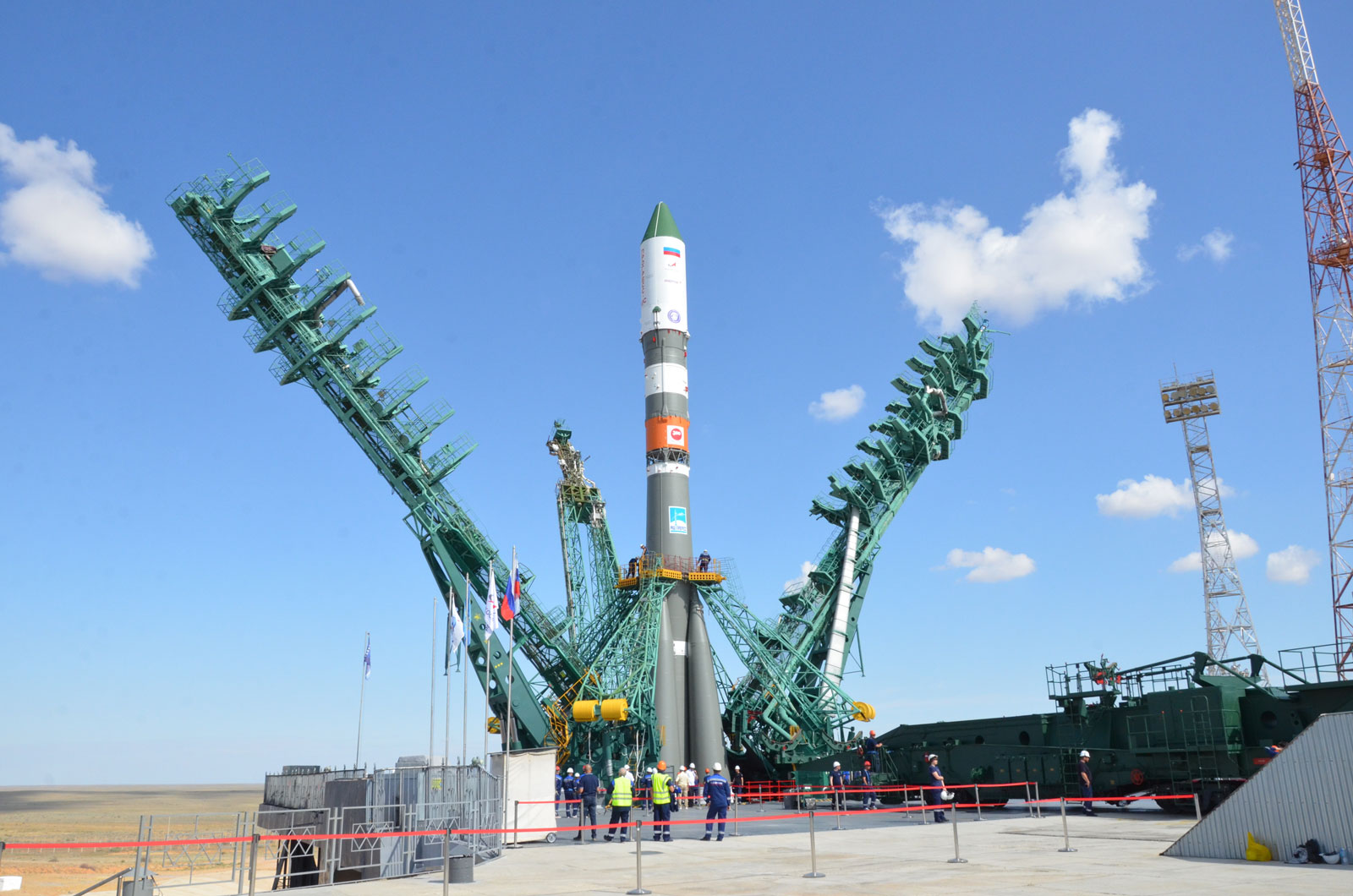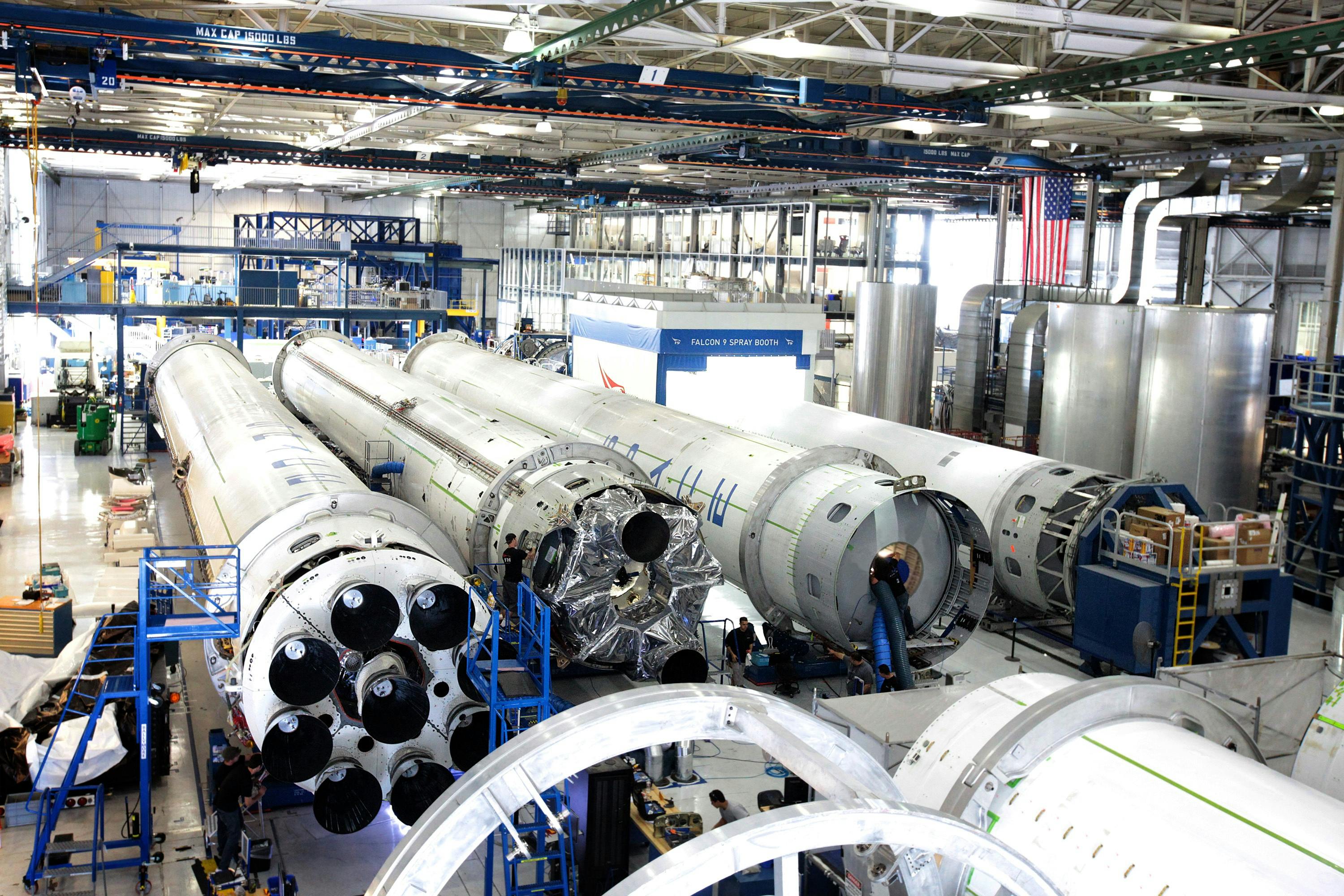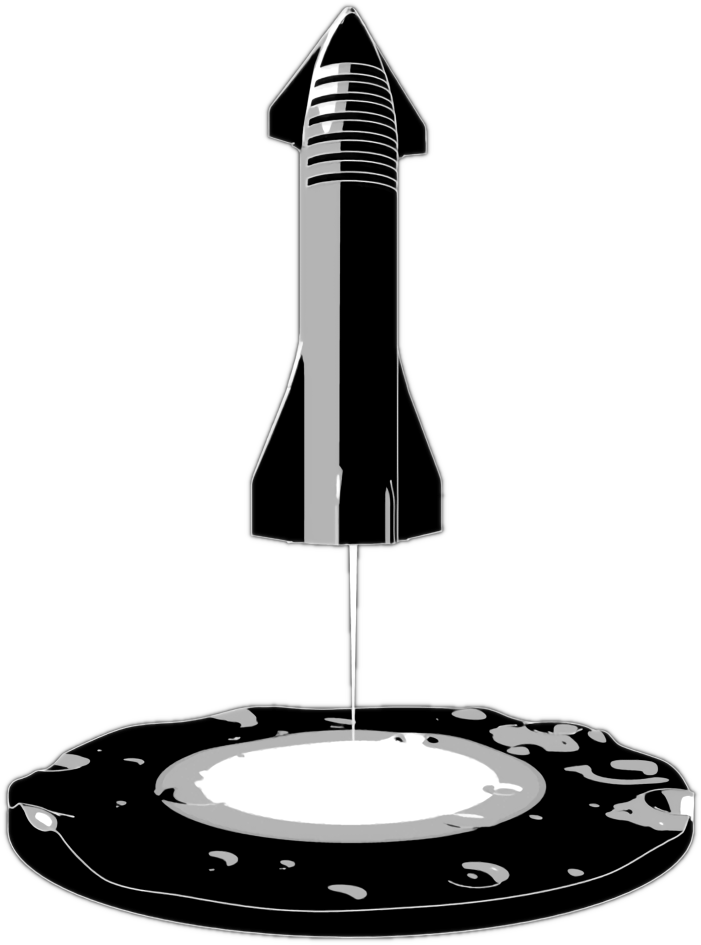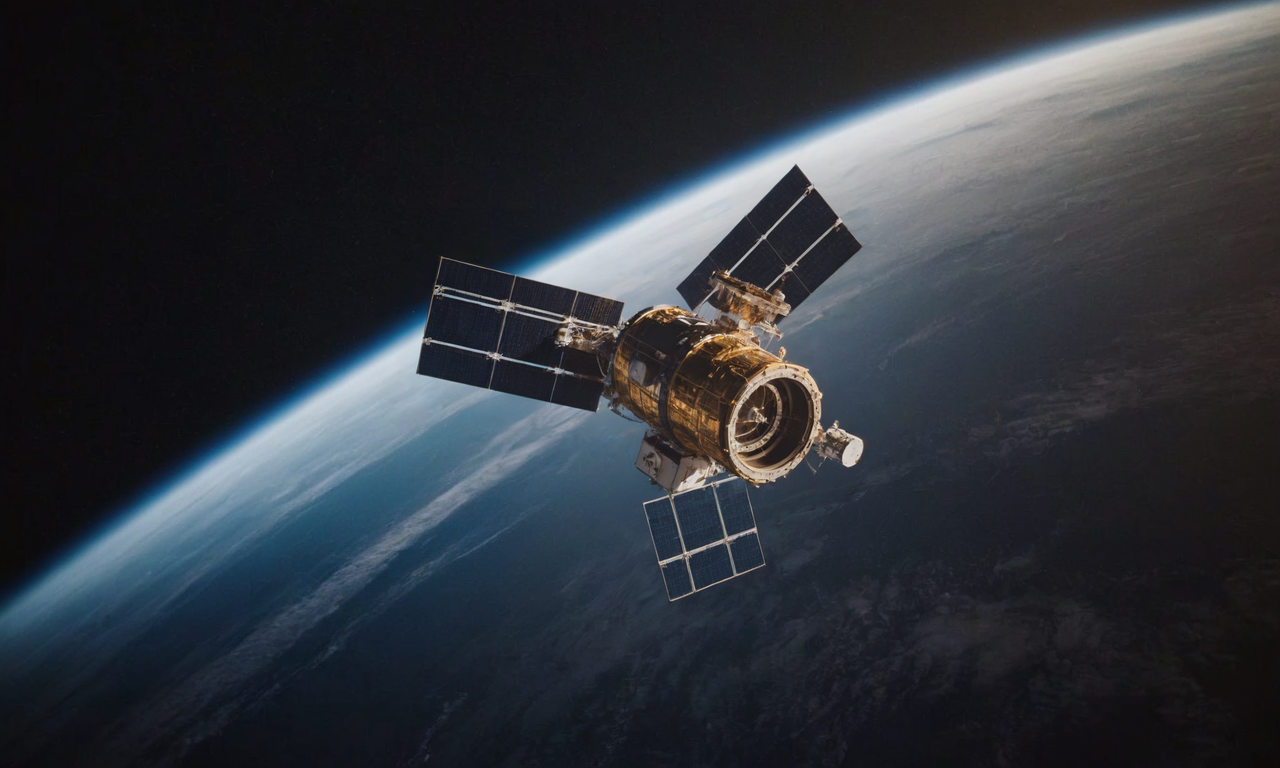· space brief · 7 min read
Space Brief 8 Aug 2025
Today's brief highlights significant shifts in military space spending due to the Golden Dome program, the U.S. Space Force's advancements in tactical satellite communications, and NASA's race to nuclear power in space.

📄Top Stories
The Pentagon’s missile defense strategies under the Golden Dome program are influencing a new direction in military satellite spending. Alongside, the U.S. Space Force is making strides with contracts awarded to enhance global tactical satellite communications. Additionally, NASA’s plans to deploy nuclear reactors to the Moon and Mars are heating up, highlighting the growing importance of space power technology.
📰Detailed Coverage
Golden Dome Signals Shift in Military Space Spending
The Golden Dome missile defense program is reshaping U.S. military space spending with significant implications for the Space Force, according to a report by the Aerospace Corp. This initiative signifies a broadened role for the Space Force in enhancing national security through advanced satellite infrastructure.
As the Space Force adapts to these priorities, the focus is on integrating more sophisticated space-based sensors and communications to bolster defense capabilities. This realignment not only underscores the importance of satellite technology in contemporary defense strategy but also suggests increased opportunities for private sector collaboration in space initiatives.
Read the full story: SpaceNews
Space Force Advances with Tactical Satcom Contracts
The U.S. Space Force’s Space Systems Command has awarded $37.5 million in initial delivery orders to companies like Viasat and Boeing for developing secure global tactical satellite communications solutions. This effort is part of the Protected Tactical Satellite Communications - Global (PTS-G) initiative, focusing on secure and resilient communications for military operations.
This development marks a critical step in modernizing military communications infrastructure, allowing for enhanced data security and global reach. Integrating these advanced systems will facilitate better situational awareness and operational effectiveness for defense agencies worldwide.
Read the full story: SpaceWar
SES Secures Crucial Army Satcom Contract
SES Space and Defense has been awarded an $89.6 million contract to provide satellite communications services for the U.S. Army’s Sustainment Tactical Network. This contract includes operations support to ensure long-haul network transport and infrastructure for military communication needs.
This five-year agreement further emphasizes the criticality of commercial satellite communications in maintaining robust and scalable military communication networks, essential for current and future operational requirements.
Read the full story: SpaceWar
NASA’s Push for Lunar and Martian Nuclear Power
NASA is accelerating its efforts to deploy nuclear reactors on the Moon and Mars. A recently issued directive aims to kickstart the nuclear power initiative, with goals to have operational reactors by the end of the decade, reflecting the strategic importance of sustainable energy sources for extraterrestrial missions.
The deployment of nuclear reactors is expected to provide a reliable power supply crucial for long-term human and robotic exploration. This initiative highlights NASA’s commitment to overcoming the challenges posed by extraterrestrial environments, ensuring the sustainability and success of future space missions.
Read the full story: SpaceDaily
Canadian Navy Bolsters Maritime Surveillance
MDA Space Ltd. has been selected by the Royal Canadian Navy to provide advanced drone surveillance systems for its Halifax-class frigates. These systems, part of the ISTAR initiative, will enhance maritime threat detection and situational awareness capabilities.
The advancement of uncrewed aircraft systems signifies a pivotal enhancement in naval surveillance, enabling greater operational flexibility and intelligence gathering, thus reinforcing the strategic maritime capabilities of the Royal Canadian Navy.
Read the full story: SpaceWar
Fast-Tracking Nuclear Power for Lunar Operations
NASA’s acting administrator, Sean Duffy, has issued a directive to expedite the placement of nuclear reactors on the Moon, amid budget constraints. This initiative aims to establish a timeline for nuclear energy deployment, signifying a pivotal step in lunar colonization efforts.
Despite financial challenges, NASA’s focus on nuclear power underscores its importance in supporting future lunar bases with a consistent energy supply, vital for both survival and operational efficiency in the harsh lunar environment.
Read the full story: MoonDaily
🛰️Satellite Spotlight
- Satellite Name: ONEWEB-0042
- NORAD ID: 45441
- Launch Date: March 21, 2020
- Mission: ONEWEB-0042 is part of a constellation aimed at providing global internet communications.
- Orbit: LEO (Low Earth Orbit)
- Operator: OneWeb
- Fun Fact: This satellite is designed using an Arrow bus configuration and is equipped with solar arrays for power, showcasing modern advancements in satellite technology.
Track this satellite in real-time on our web app: Track ONEWEB-0042
🌌Space Weather
Space weather conditions are currently quiet.
Current
R0 - S0 - G0
Last 24 Hour Maximums
R1 - S0 - G0
Recent Alerts
- ALERT: Type IV Radio Emission
- Begin Time: 2025 Aug 07 1136 UTC
- Comment: Likely associated with the M3.9 flare event from AR 4168. Type IV emissions are typically linked to strong solar eruptions.
Next 24 Hours
-
Radio Blackouts Probability
- Minor: 55
- Major: 10
- Risk: None
-
Solar Radiation
- Probability: 15
- Risk: None
-
Geomagnetic Storming
- Scale: 2
- Impact: moderate
- Activity: Moderate
-
Impact Summary
- No risk of radio blackouts.
- No risk of solar radiation storms.
- Moderate geomagnetic activity expected.
- G1-G2 (Minor-Moderate) geomagnetic storms are likely on Aug 08-09 due to influences from a CME on Aug 05.
- A slight chance for an S1 (Minor) solar radiation event exists for Aug 08.
- R1-R2 (Minor-Moderate) radio blackouts are possible, with a slight chance for R3 (Strong) or greater radio blackouts primarily tied to upcoming flare activity from AR 4168.
Long Term Forecast
- Forecast of Solar and Geomagnetic Activity (Aug 04 - Aug 30, 2025)
- Solar activity is expected to mostly be low with chances for M-class (R1-R2, Minor-Moderate) flares during the outlook period.
- No proton events are anticipated at geosynchronous orbit.
- High levels of greater than 2 MeV electron flux are expected on Aug 12-18 and 21-28 due to recurrent coronal hole high-speed stream (CH HSS) influences.
- Normal to moderate levels are expected on Aug 04-11, 18-19, and 29-30.
- Geomagnetic field activity may reach active to G1 (Minor) storm levels on Aug 11-15, 18-22, and 25-30, also due to recurrent CH HSS effects.
- Quiet to unsettled levels are likely on the remaining days of this outlook period.
🚀 Upcoming Space Launches
August 8
- SpaceX Falcon 9 Block 5:
- Project Kuiper (KF-02) from Cape Canaveral SFS, FL, USA (13:40 UTC) Second of a three launches contract for Amazon’s Kuiper low Earth orbit satellite internet constellation. 24 satellites are on board.
- China Rocket Co. Ltd. Smart Dragon 3:
- Unknown Payload from Sea Launch (16:21 UTC) Details TBD.
August 10
- SpaceX Falcon 9 Block 5:
- Starlink Group 17-4 from Vandenberg SFB, CA, USA (02:05 UTC) A batch of 24 satellites for the Starlink mega-constellation - SpaceX’s project for space-based Internet communication system.
- SpaceX Falcon 9 Block 5:
- Starlink Group 10-20 from Cape Canaveral SFS, FL, USA (12:16 UTC) A batch of 28 satellites for the Starlink mega-constellation - SpaceX’s project for space-based Internet communication system.
August 12
- United Launch Alliance Vulcan VC4S:
- USSF-106 from Cape Canaveral SFS, FL, USA (23:59 UTC) The launch will deploy various payloads directly into geosynchronous orbit, including the NTS-3 (Navigation Technology Satellite 3), a demonstration navigation satellite testing a new digital signal generator.
August 13
- Arianespace Ariane 62:
- Metop-SG A1 from Guiana Space Centre, French Guiana (00:37 UTC) First of EUMETSAT’s second generation of Metop weather satellites.
- SpaceX Falcon 9 Block 5:
- Starlink Group 10-11 from Cape Canaveral SFS, FL, USA (12:41 UTC) A batch of 28 satellites for the Starlink mega-constellation - SpaceX’s project for space-based Internet communication system.
- SpaceX Falcon 9 Block 5:
- Starlink Group 17-5 from Vandenberg SFB, CA, USA (15:44 UTC) A batch of 24 satellites for the Starlink mega-constellation - SpaceX’s project for space-based Internet communication system.
August 17
- SpaceX Falcon 9 Block 5:
- Starlink Group 17-6 from Vandenberg SFB, CA, USA (15:44 UTC) A batch of 24 satellites for the Starlink mega-constellation - SpaceX’s project for space-based Internet communication system.
August 20
- Russian Federal Space Agency (ROSCOSMOS) Soyuz 2.1a:
- Bion-M No. 2 from Baikonur Cosmodrome, Republic of Kazakhstan (17:13 UTC) Bion-M is the next generation of Russian biological research satellites, featuring increased mission duration and enhanced scientific capabilities.
Note: Launch dates and times are subject to change due to technical or weather considerations.

Maurice Stellarski





